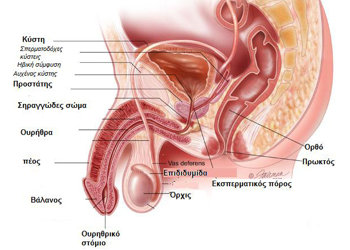 Incontinence is an extremely inconvenient situation which affects the quality of life of millions of people. Incontinence is defined as any involuntary urine leakage. Incontinence is a condition of men and women of all ages but is more common in the elderly and patients living in institutions. The condition other than the purely medical dimension, has also an important social dimension, since it is most often associated with a sense of shame, isolation and depression.
Incontinence is an extremely inconvenient situation which affects the quality of life of millions of people. Incontinence is defined as any involuntary urine leakage. Incontinence is a condition of men and women of all ages but is more common in the elderly and patients living in institutions. The condition other than the purely medical dimension, has also an important social dimension, since it is most often associated with a sense of shame, isolation and depression.
Even today the problem has not been given the necessary attention. Information for patients is at least insufficient and often incontinence is considered a 'normal' result of age, not an illness. This is one of the main reasons that patients do not seek medical help. Only 4% of sufferers will seek a solution to their problem.
Features of Hematuria
Of particular importance for the diagnosis of the cause of hematuria is the identification of its character, that is, if it is: macroscopic or microscopic in nature, if it appears at the beginning, the end or throughout the duration of urination and if it is accompanied by clots or/and pain.
Initial hematuria usually indicates that the blood originates from the urethra. Terminal hematuria indicates that blood originates from the neck-triangle bladder and prostate. Total hematuria indicates that the bleeding occurs in the bladder, prostate or the upper urinary tract (kidney-ureter). The presence of pain during hematuria is usually indicative (but not conclusive) of inflammation or petrification, while painless hematuria is usually associated with a tumor of the urinary system. Clots give information about the severity of hematuria, and their shape (eg. like pasta) may help identify its cause. It is therefore important for the patient to know and be able to alert the physician of the characteristics of hematuria.
Types of incontinence and their importance
1. Effort incontinence is the loss of urine that occurs during exercise, weight lifting, coughing, sneezing etc.
2. Urgent incontinence is the involuntary loss of urine following a strong desire to urinate. In this form, the patient complains that the desire to urinate is so strong that it can not be 'withheld' and that urine leakage occurs before reaching the toilet.
3. Mixed incontinence is a combination of the two previous types.
Does it matter what type of incontinence?
Yes, because there is a different treatment for each type.
Diagnosis
The diagnosis of incontinence is based on the historical background of the condition, which largely determines its type, duration, and impact on the quality of life of the patient. Incontinence can be caused by various neurological diseases, and medications. The physical examination and simple laboratory tests complement the diagnosis.
If there are diagnostic problems it may be necessary to conduct special examinations, such as urodynamic monitoring.
The need for conducting urodynamic monitoring is always decided by the attending physician.
Urodynamic Monitoring
Urination is a dynamic process requiring the physiological integrity of the urinary tract and the nervous system. The lower urinary tract has two clear functions: a) storing (filling with) urine continuously produced in the kidneys and b) its elimination (bowel movement) at regular intervals when social circumstances permit.
Urodynamic monitoring is a representation and recording of the filling and emptying of the bladder in the laboratory. The purpose of urodynamic testing is the detailed scrutiny of the functioning of the organs of the lower urinary tract and the estimation of the synergies between them during the filling of the bladder as well as during urination.
Treatment
Accurate diagnosis of the type and severity of incontinence will result in selecting the appropriate treatment. The therapeutic approaches may be:
A) simple behavioral therapies
B) specific physical therapy,
C) drug treatment,
D) minimally invasive procedures (botox, electrostimulation) and
E) surgeries. In recent years, the so called tension-free intravaginal procedures are being successfully utilized.